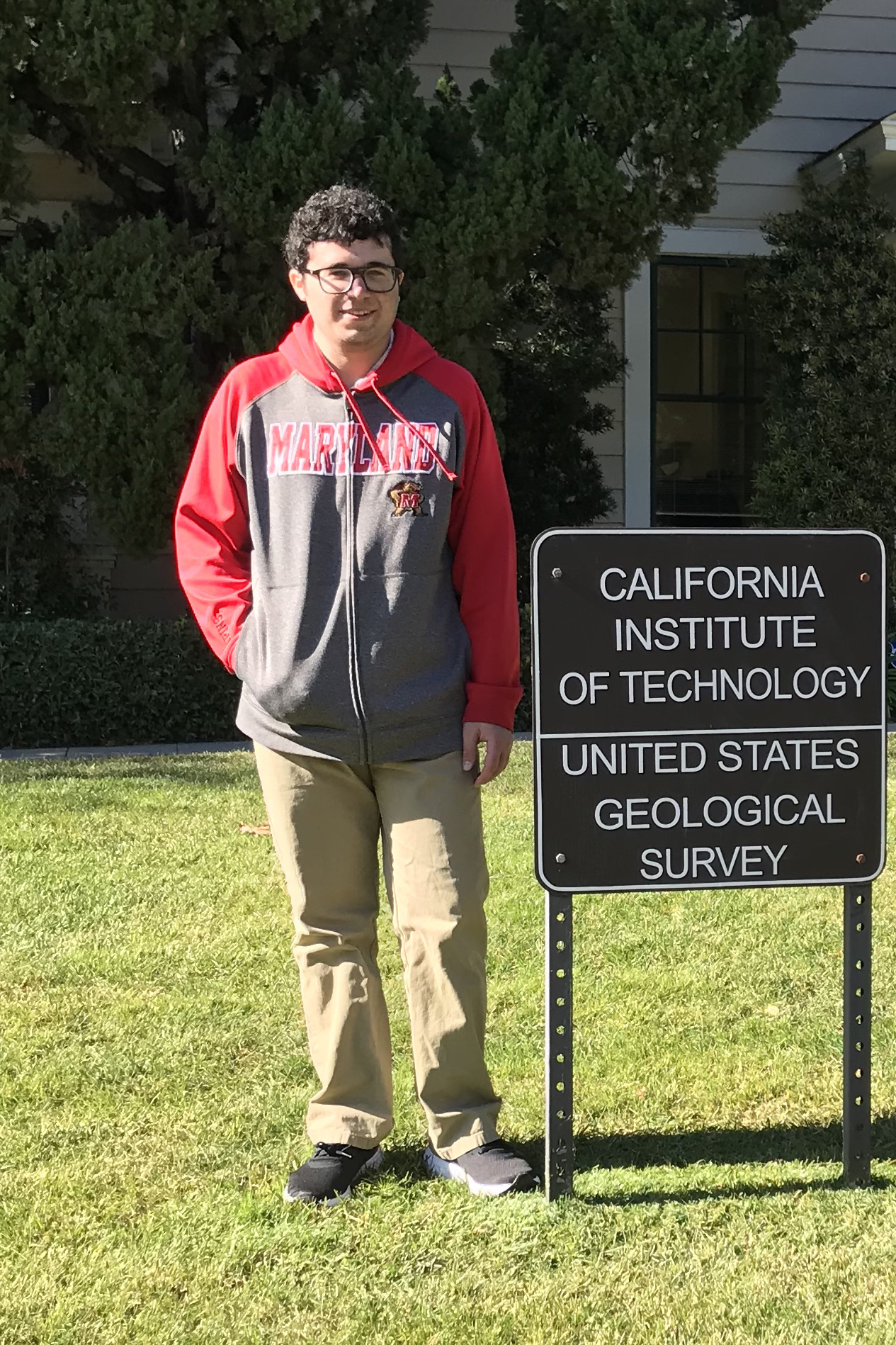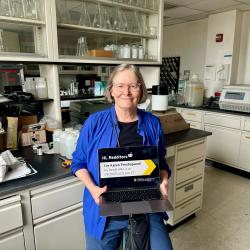Adam Margolis Had to Do Some Online Digging After COVID-19 Altered His Plans
This summer, Adam Margolis was planning to take the trip of a lifetime. The senior geology major and a few of his classmates at the University of Maryland were going to pack up a car and take a big cross-country road trip to Colorado. Once they arrived in Canon City, Colorado, they were going to participate in a five-week geology field camp hosted by Oklahoma State University, where they would learn how to map, measure, describe and interpret sedimentary, igneous and metamorphic rock units.
 Margolis received a CMNS Alumni Network Undergraduate Summer Research, Travel and Educational Enrichment Award to help pay for the field camp. The annual award provides up to $2,000 to help students defray costs related to conducting research or traveling to field courses, conferences or other summer activities that enhance or expand the student’s educational and professional development.
Margolis received a CMNS Alumni Network Undergraduate Summer Research, Travel and Educational Enrichment Award to help pay for the field camp. The annual award provides up to $2,000 to help students defray costs related to conducting research or traveling to field courses, conferences or other summer activities that enhance or expand the student’s educational and professional development.
“I was shocked to learn that I received the award,” Margolis said of finding out he was one of the selected students. “I’ve applied to scholarships in the past, but to actually receive one was exciting.”
However, once the coronavirus made its way to the United States, Margolis’ excitement about his upcoming trip shifted to disappointment. Like most things that were scheduled to happen in the spring and summer of 2020, Margolis’ field camp was canceled.
“I was disappointed when I found out it was canceled because in addition to the camp, I was looking forward to the trip with my friends,” he said. “But I completely understand the situation.”
In the wake of the COVID-19 pandemic, Margolis’ friends decided to postpone their trip until summer 2021, but for Margolis, who plans to graduate in December, that was not an option. All geology majors are required to complete a field camp prior to graduation, and that meant Margolis had to get creative.
His advisor, Geology Principal Lecturer John Merck, suggested that Margolis try to find an online field camp, which would be an accepted alternative for seniors who were unable to attend regular field camps due to the pandemic. Margolis found one hosted by the University of Nevada, Reno, and he could pay for the course using the funding from his award and fulfill his graduation requirements.
The field camp held classes on Zoom from 9 a.m. to 5 p.m. daily for 4 1/2 weeks. In the mornings, there were lectures on the geologic history of the region, group presentations about relevant scientific papers, or one-on-one meetings with the professors or teaching assistant to track their progress. In the afternoons, they used Google Earth to compare photos captured by past field camps with satellite imagery to draw unit contact lines. Using Adobe Illustrator, the students traced over lines in the Google Earth images to create interpretive geological maps. Then, for the final week of camp, the students received rock samples by mail to give them a more hands-on experience with the images they had been studying.
“I would have liked it better if we could be out in the field because there would have been a lot less distractions than being at home,” Margolis said of his online field camp experience. “But for the university’s first time conducting a camp online, they did a great job of teaching and the information was pretty straightforward.”
Now with his field camp complete, Margolis is looking ahead to completing his senior thesis project and graduating in December. For his thesis, Margolis is working with Geology Assistant Professor Mong-Han Huang on a research project about aseismic fault creep—the measurable surface displacement along a fault in the absence of notable earthquakes—along the San Andreas Fault, which felt like a natural choice for Margolis, a California native.
“Just last year, there was a 7.1 magnitude earthquake in Ridgecrest, which I felt in Orange County more than 2 1/2 hours away,” he said. “So I decided to do my research project on how that earthquake is affecting or could affect the plate boundary at the San Andreas Fault.”
Margolis has been working on this project since January and has some preliminary data that he is analyzing. In the fall, he will finalize the data and put a final paper together.
After graduation, Margolis plans to take earthquake research even farther in graduate school.
“In grad school, I plan on studying planetary seismology, where you study the earthquakes of other planets,” he said. “There is recent evidence for Marsquakes as recorded by the seismometer on NASA's InSight Mars Lander that I think is very exciting for the field.”
Margolis, the president of UMD’s Geology Club, has been interested in planetary seismology since elementary school, but it wasn’t until he took a research class on asteroids at Maryland that he knew he wanted to continue studying it in graduate school.
“There's just so much more to geology than what is on the Earth. Every planet, every moon, every ball of rock has its own unique geological processes which have yet to be fully understood,” he said. “I can't wait to be part of the next geological discovery in our solar system or elsewhere in the universe.”
###
Media Relations Contact: Abby Robinson, 301-405-5845, abbyr@umd.edu
Writer: Chelsea Torres
University of Maryland
College of Computer, Mathematical, and Natural Sciences
2300 Symons Hall
College Park, Md. 20742
www.cmns.umd.edu
@UMDscience
About the College of Computer, Mathematical, and Natural Sciences
The College of Computer, Mathematical, and Natural Sciences at the University of Maryland educates more than 9,000 future scientific leaders in its undergraduate and graduate programs each year. The college's 10 departments and more than a dozen interdisciplinary research centers foster scientific discovery with annual sponsored research funding exceeding $200 million.







